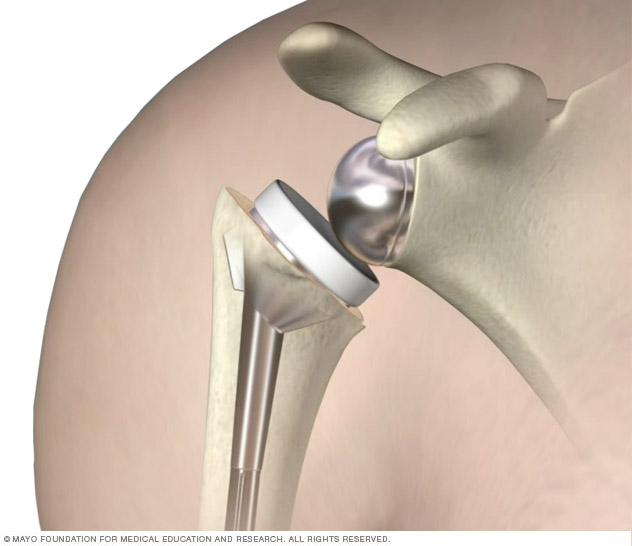Reverse shoulder prosthesis
Reverse shoulder replacement is a type of shoulder replacement in which the normal ball and socket relationship of glenohumeral joint is reversed, creating a more stable joint with a fixed fulcrum. This form of shoulder replacement is utilized in situations in which conventional shoulder replacement surgery would lead to poor outcomes and high failure rates. Originally considered a salvage procedure, the combination of improved design features and excellent clinical outcome data has led to reverse shoulder replacement largely replacing shoulder hemiarthroplasty for most indications, and even challenging conventional anatomic shoulder replacement in many countries as the most commonly performed shoulder replacement procedure.
Historically, the primary indication to perform reverse shoulder replacement was cuff tear arthropathy, which consists of advanced glenohumeral arthritis in the presence of a massive rotator cuff tear. As reverse shoulder replacement has become more popular, the indications have expanded to include shoulder “pseudoparalysis” due to massive rotator cuff tears, shoulder fractures, severe bone loss on the scapula or humerus precluding the use of standard implants and failed prior shoulder replacement procedures.
Anatomic shoulder prosthesis
If all non-surgical, conservative treatment options fail and pain is affecting quality of life, then the shoulder replacement will likely be indicated. Various studies on shoulder replacements have confirmed this indication, noting specifically that severe glenohumeral arthritis as the cause.
Hemi shoulder replacement
The metal prothesis that is used to replace the head of the humerus during a shoulder hemiarthroplasty is secured in place with a metal stem that is positioned inside the long hollow portion of this bone. The rounded head of the humerus naturally fits into the glenoid fossa, the curved opening of the scapula bone (shoulder blade). Within this glenohumeral joint, the ends of the bones are protected by cartilage. Ligaments, tendons, and the rotator cuff muscles give the joint a substantial range of motion. A shoulder hemiarthroplasty surgery may involve repair of other structures in the glenohumeral joint, but only the humeral head is replaced.
Shoulder resurfacing
Shoulder resurfacing is an alternative to a total shoulder replacement and is used for patients who are young and have active lifestyles. Rather than cutting and replacing the two bones (humerus and scapula) in the joint, the damaged top of the arm bone (the humeral head) is replaced with a hemispheric metallic head. This gives a new surface to the ball of the joint while allowing much of the natural bone to remain intact.


